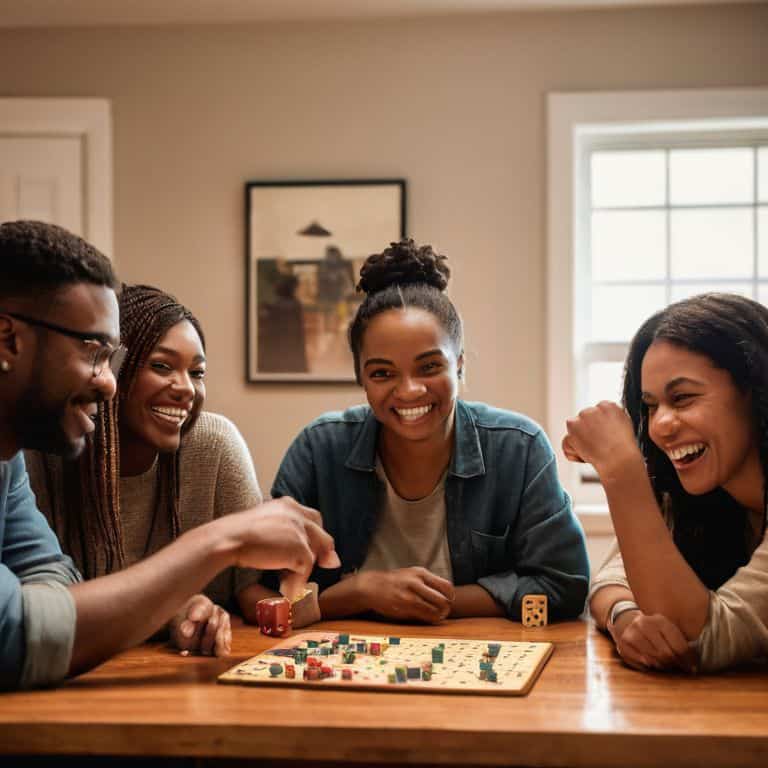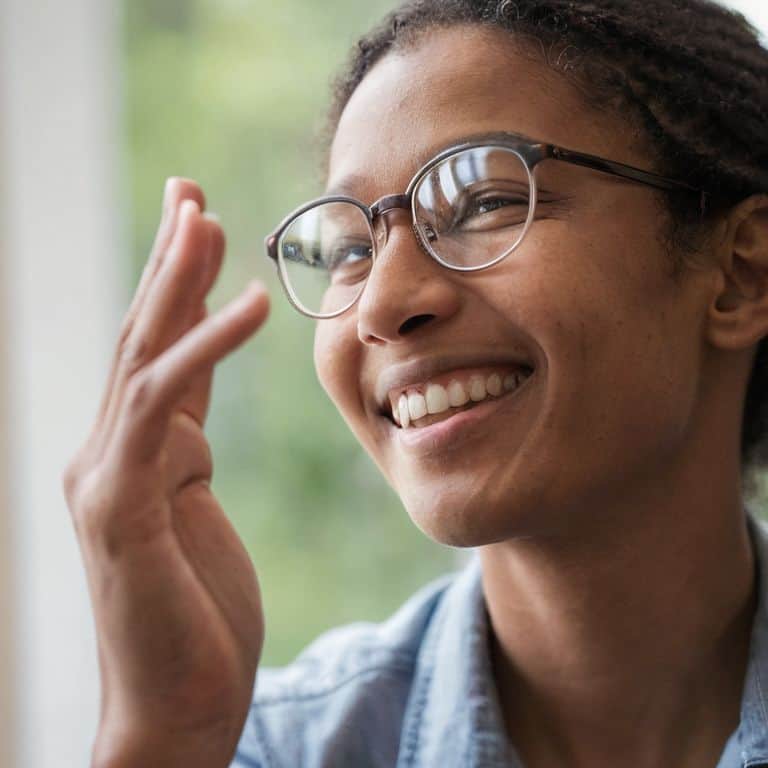I still remember the first time I realized the importance of nonverbal communication in my own life. I was hosting a board game night, and one of my friends was being unusually quiet. At first, I thought they were just having a bad day, but as the night went on, I noticed that their body language was screaming discomfort. It wasn’t until we took a break and had a heart-to-heart that I understood the true issue: they felt left out of the conversation. This experience taught me that nonverbal cues can often speak louder than words, and it’s our job to listen.
As a relationship coach, I’ve seen time and time again how effective communication can make or break our connections with others. In this article, I promise to cut through the noise and provide you with practical tools to improve your nonverbal communication skills. I’ll share real-life scenarios, personal anecdotes, and actionable advice to help you navigate the complex world of nonverbal cues. My goal is to empower you with the skills to build stronger, more peaceful relationships, and to reduce stress by improving the quality of your daily interactions. By the end of this journey, you’ll be equipped with the knowledge to recognize and respond to the unspoken needs of those around you, and to cultivate deeper, more meaningful connections.
Table of Contents
Unlocking Silent Signals

As I reflect on my experiences hosting board game nights, I’ve noticed how facial expressions in communication can significantly impact the dynamics of a group. A raised eyebrow or a smile can convey a range of emotions, from excitement to skepticism. It’s fascinating to see how these nonverbal cues can either bring people together or create tension. I’ve also observed how cultural differences in body language can lead to misunderstandings, highlighting the need for emotional intelligence in navigating these interactions.
In my work as a relationship coach, I’ve seen how verbal vs nonverbal cues can sometimes contradict each other, leading to confusion and conflict. For instance, someone might say they’re fine, but their nonverbal signals, such as crossed arms or avoiding eye contact, suggest otherwise. By being aware of these discrepancies, we can address the underlying issues and work towards building stronger, more authentic connections.
To improve our relationships, it’s essential to develop emotional intelligence and nonverbal signals awareness. This involves being mindful of our own body language and paying attention to the subtle cues of others. By doing so, we can create a more harmonious and supportive environment, whether in our personal or professional lives.
Beyond Words Facial Expressions
When we think about nonverbal communication, facial expressions are often the first thing that comes to mind. A subtle smile or a raised eyebrow can convey a wealth of information about our emotional state and intentions. I’ve noticed that during my board game nights, a person’s facial expression can instantly change the atmosphere of the room.
Our facial expressions can be a powerful tool for building rapport, but they can also be misleading if not considered in context. A person may be smiling, but their eyes can tell a different story, revealing underlying feelings of frustration or disappointment.
Cultural Differences in Body Talk
As I’ve hosted board game nights and interacted with people from diverse backgrounds, I’ve noticed that cultural nuances play a significant role in shaping our nonverbal cues. A gesture that’s considered friendly in one culture might be perceived as aggressive in another. For instance, direct eye contact is often seen as a sign of confidence and respect in Western cultures, but in some Eastern cultures, it’s considered confrontational.
In my workshops, I emphasize the importance of contextual awareness when decoding body language. What might be a sign of interest in one culture could be a sign of boredom in another. By being sensitive to these cultural differences, we can avoid misunderstandings and build stronger connections with people from diverse backgrounds.
The Importance of Nonverbal Communication

As I reflect on my experiences hosting board game nights, I’ve noticed how facial expressions in communication can greatly impact the dynamics of a group. A raised eyebrow or a smile can speak volumes about a person’s intentions and emotions. It’s fascinating to see how these nonverbal cues can bring people together or drive them apart. In my work as a relationship coach, I’ve seen how being aware of these cues can help individuals navigate conflicts and build stronger connections.
In any social setting, including the workplace, verbal vs nonverbal cues can often convey different messages. While verbal communication is essential, nonverbal signals can be just as powerful. I’ve worked with clients who struggle to reconcile their verbal and nonverbal communication, leading to misunderstandings and tension. By recognizing the pros and cons of nonverbal communication, we can learn to balance our words with our actions and create a more harmonious environment.
By developing emotional intelligence and nonverbal signals, we can become more attuned to the needs and emotions of those around us. This, in turn, can help us build stronger relationships and improve our overall well-being. As someone who’s passionate about helping others communicate effectively, I believe that understanding nonverbal communication is key to creating a more compassionate and empathetic community.
Pros and Cons in Workplace Connections
In the workplace, nonverbal communication can be a double-edged sword. On one hand, it can facilitate stronger bonds among colleagues, leading to a more cohesive and productive team. A simple smile or nod of acknowledgement can go a long way in creating a positive work environment.
However, nonverbal cues can also be misinterpreted, leading to miscommunication and misunderstandings. For instance, crossing one’s arms may be seen as defensive or uncooperative, even if the person is simply cold or uncomfortable. It’s essential to be aware of these potential pitfalls to navigate workplace connections effectively.
Verbal vs Nonverbal Intelligence Matters
When it comes to communication, verbal intelligence plays a significant role in how we express ourselves, but it’s not the only factor. Our words can be chosen carefully, but it’s the nonverbal cues that often reveal our true intentions. I’ve noticed that in my board game nights, a simple misinterpretation of a nonverbal signal can lead to misunderstandings.
In contrast, emotional intelligence is just as crucial, as it helps us navigate the complexities of nonverbal communication. By being aware of our own emotions and those of others, we can better understand the unspoken signals that are being sent, and respond in a way that builds trust and strengthens our relationships.
5 Essential Takeaways for Mastering Nonverbal Communication
- Pay attention to inconsistencies between what’s being said and what’s being shown, as these discrepancies can reveal underlying issues or unmet needs
- Practice active observation by focusing on the facial expressions, body language, and tone of voice of the people you interact with, as these nonverbal cues can convey just as much information as spoken words
- Be mindful of cultural differences in nonverbal communication to avoid misinterpreting signals and to foster more empathetic and inclusive interactions
- Develop your emotional intelligence by recognizing and managing your own nonverbal signals, such as maintaining eye contact, using open and approachable body language, and being aware of your tone of voice
- Use nonverbal communication to reinforce your verbal messages and build trust, such as through nodding, making supportive gestures, and using positive facial expressions to show engagement and interest
Key Takeaways for Navigating Nonverbal Communication
I’ve learned that paying attention to nonverbal cues like facial expressions and body language is crucial in understanding the full context of a conversation, as these silent signals often convey more than the words being spoken
Understanding cultural differences in nonverbal communication can help avoid misunderstandings and strengthen relationships, whether personal or professional, by being aware of the nuances in body language and facial expressions across different cultures
By being mindful of our own nonverbal communication and making a conscious effort to align it with our verbal messages, we can build trust, improve our connections with others, and navigate conflicts more effectively, leading to more peaceful and stronger relationships
Hearing Beyond the Noise
The most profound connections are often born from the spaces between our words, where a glance, a gesture, or a pause can convey more than a thousand spoken words.
Mia Campbell
Embracing the Power of Nonverbal Communication

As we’ve explored the importance of nonverbal communication, it’s clear that silent signals can make or break our connections with others. From the subtle cues of facial expressions to the broader implications of cultural differences in body language, it’s essential to be aware of the unspoken messages we’re sending and receiving. By recognizing the interplay between verbal and nonverbal intelligence, we can navigate our personal and professional relationships with more empathy and understanding. This awareness is crucial in workplace connections, where the pros and cons of nonverbal communication can significantly impact our collaborations and outcomes.
As we move forward, let’s remember that effective communication is a skill that can be developed over time with practice and patience. By embracing the complexity of nonverbal communication and being open to learning from our mistakes, we can build stronger, more peaceful relationships that bring joy and fulfillment to our lives. So, the next time you find yourself in a challenging conversation, take a deep breath, notice the nonverbal cues, and listen with empathy – you might be surprised at the positive impact it can have on your connections with others.
Frequently Asked Questions
How can I become more aware of my own nonverbal cues and their impact on others?
To become more aware of your nonverbal cues, I recommend recording yourself in conversations or asking a trusted friend to provide feedback. Pay attention to your body language, facial expressions, and tone of voice – notice how they align with your intended message. This self-reflection can help you identify patterns and make adjustments to ensure your nonverbal signals are sending the right signals.
What are some common nonverbal signals that can be misinterpreted in different cultural contexts?
I’ve seen this play out in my board game nights – a thumbs up from a Western friend can mean “great job,” but in some Asian cultures, it’s seen as rude. Similarly, direct eye contact is often viewed as confident in the West, but in other cultures, it’s perceived as aggressive. Being aware of these differences can help us avoid misinterpreting nonverbal cues.
Can nonverbal communication be used to resolve conflicts or is it more effective in preventing them from arising in the first place?
I believe nonverbal communication can do both – prevent conflicts and resolve them. A gentle touch or a calm tone can diffuse tension, while a thoughtful pause can prevent miscommunication. In my workshops, I’ve seen how mindful body language and attentive listening can turn confrontations into constructive conversations, highlighting the power of nonverbal cues in conflict resolution.
